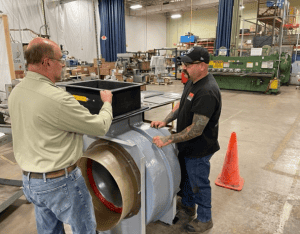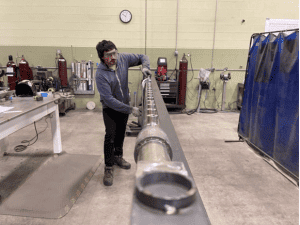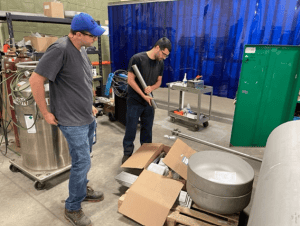
Re:Build Optimation has recently surpassed 600,000 hours without a Lost Time Injury. This is significant in the construction, engineering, and manufacturing industries. According to the Bureau of Labor Statistics, on average, construction companies will have a Lost Time Injury Rate (LTIR) of 1.2 during a year. This is based on 200 Employees and the constant of 200,000 hours divided by the actual labor hours for the year. A Lost Time Injury occurs when a teammate is injured in the workplace and must stay out of work until recovered. These injuries can be muscle strains or as severe as a broken limb or amputation. What we are doing here at Re:Build Optimation is special in that regard and was forged by the hard work of all of our teammates to keep each other safe. Its easy to get lost in the numbers. It’s hard to quantify the nuances in the choices and actions that individuals take to protect themselves and their teammates.
That being said our recipe is no secret. Nor is it a simple fix or cutting-edge program:
We get back to basics by looking at our work through the three domains of safe work: procedures, supervision, and

training. We value the safety of our team, customers, and community through our display of competency and leadership. We also seek out ways to continually improve our process and product to grow stronger as a team.
Over the past 18 months we have completed high risk projects such as removing an 18,000 lbs chiller unit off a 3-story roof that contained lead and asbestos. We entered chemical tanks containing highly hazardous chemicals both toxic and flammable. We designed, built, and tested cutting-edge automated manufacturing machines the world has never seen before. We installed piping and electrical lines in extra-clean room environments. We 3D printed concrete towers for wind turbines in a building the size of a department store. We took a battery manufacturing machine out of storage and began the process of bringing it back to life to produce future energy storage needs at a Giga-Factory. We designed, built, and installed roasters, tanks, platforms for local and national food production plants. We fabricated and tested hydrogen fuel cell test stands.

All these projects had unique risks associated with them. Yet just as we carefully engineer and design for manufacturing of the future, we also engineer and design safety into our process. We have a questioning attitude towards hazards, and we back each other up.
While conducting a site visit, another teammate asked me “how long do you think we can go without an injury?”. What a question! How long can we go? The answer is right in front of us and depends on our resiliency and commitment to our values. No individual can answer this question but all of us can influence the answer.
